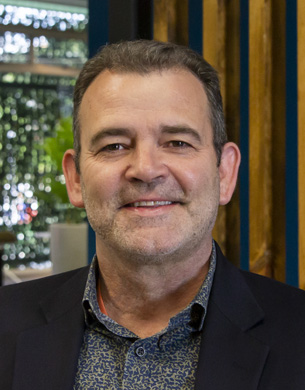In this article:
- Why a nearshore delivery model can be an attractive alternative to offshore and onshore by alleviating the pain points inherent in both delivery models
- Why companies choose offshore, what the common issues are, and how nearshore can help
- Why companies choose onshore, what the common issues are, and how nearshore can help
- How a nearshore delivery model can provide a timely solution to the unique economic challenges created by the pandemic
We cover a lot of industry topics in our blog, from high-demand services like analytics and machine learning, to tools reshaping the software landscape like state machines and AI-powered chatbots, and even “how to” articles, with tips to improve your software product or process. What we don’t cover often is the nearshore delivery model, a model by which GAP primarily operates.
Nearshore is still a relatively under-the-radar concept, despite being around for about 15 years. Though it is not as popular as its more traditional counterparts – onshore and offshore – it is gaining traction and wider acceptance, as it provides an attractive alternative to the issues plaguing other traditional delivery methods. Recently the nearshore delivery model’s unique value proposition has seen a boost in popularity due to the circumstances surrounding the pandemic. As more people are beginning to consider nearshore, we wanted to explore why it can be the perfect solution for companies looking to grow quickly but sustainably, while alleviating the stresses of using local or offshore resources.
The first thing to consider is reasons why a company might choose offshore or onshore, what the benefits of each model are, and what common problems are inherent to both. Then we can look at how nearshore can fill in these gaps.
Why do companies choose offshore?

The most common and obvious reason for choosing an offshore partner is cost savings. Offshore developers, typically located in India or Ukraine, do the work at a fraction of the cost of US-based developers. This model is most successful for companies facing a large backlog of work on their maintenance-related products and needing an army of “hands-on keyboards” to execute on a clear, established plan. It’s not ideal in a situation where a company is seeking a more strategic engagement with their Agile development partner, requiring close and frequent collaboration, and needing to solve complex problems or develop product strategy.
Though collaborating across continents and time zones has undoubtedly become easier and more streamlined, the distance – both physical and cultural – continues to make offshore a challenge. Clients face several obstacles when working with their offshore teams: extremely long-haul travel is required to collaborate on-site, and notably different time zones make it difficult to collaborate virtually in real-time. Communication is hindered by poor grasp of English (not just in terms of vocabulary, but the subtleties of business subtext as well), and the overall quality of the work can be subpar to what is expected in the US. A less discussed but nevertheless important problem that often occurs when working with offshore teams is cultural dissonance. Though Java and MySQL are the same anywhere in the world, business hours, workplace ethics, communication styles, and authority dynamics – can be very different, making it challenging to set expectations and maintain a smooth, productive workflow. If a company is not properly prepared to face these issues with their offshore vendor, then what once looked good on a spreadsheet can devolve into a mess of delays, cost overruns and frustrations. This is what we refer to as “the high cost of low cost”.
The nearshore delivery model addresses these issues by working with countries that are nearer to the US, both geographically and culturally. These are countries in Central and South America, where the lower cost of talent is complemented by a recent surge in high-tech graduates. Countries like Costa Rica, Colombia, Mexico, and to a lesser extent Argentina and Panama, have a growing pool of qualified engineers, making them an attractive option for US based companies to fulfill their software development needs. Generally, nearshore offers higher caliber talent than that of offshore providers, due in large part to superior university programs that are geared to support the North American market. Travel takes less than a single business day, and time zones are either aligned, or off by a reasonable 1-2 hours, making real time collaboration much easier. As a bonus, these destinations are just genuinely pleasant to visit, affording an opportunity to not only be productive, but squeeze in some recreation as well.
GAP offers all these benefits and takes them a step further. Nearly all of our developers are full-time employees. This is fairly unusual in nearshore delivery models: due to the fluid nature of this business, many nearshore companies employ their developers and engineers as contractors, allowing them to scale teams up or down with ease. But this can result in a revolving door mentality, and come with associated attrition and lack of commitment. By employing all our engineers as full-time GAPsters, we are truly investing in people, which is one of GAP’s values. High-quality engineering talent is hard to come by, and harder to retain, therefore all engineers who are good enough to pass our rigorous hiring process are hired full time. This allows us to fully invest in them as individuals, with a defined career path, mandatory English and cultural training designed to help them excel in a US business environment, and opportunities for challenging and rewarding work. As a result, our staff turnover is lower than the industry average, and our average tenure is higher. We have a number of engineers who have been with the company for over a decade.
As we retain and develop top talent, we are able to offer our clients higher quality teams. This is what allows us to be more than a software delivery vendor, and a true strategic partner. We help our clients not only solve their immediate software development needs, but assist them in developing long-term product strategies, building roadmaps for technology transformation or migration to the cloud, and generally act as an invested advocate for their overall success.
Why do companies choose onshore?

Onshore is a more attractive option for companies that value real-time collaboration, whose projects require close, frequent interaction with the development teams, and whose project goals may be more ambitious than resolving a code backlog; for example – introducing a new services strategy and building the associated platform, or refactoring a legacy application. These types of complex, high value services are more often sought through onshore – either outsourcing locally, or hiring new developers, whether full-time or on a contract basis.
The biggest hindrances to onshore development are price points and access. Compensation for quality software developers is at an all-time high in the US, compounded by a shortage of talent resulting from years of economic growth and associated demand. In some parts of the country, like the coasts and certain tech centers like Denver and Austin, salaries for experienced software engineers have become prohibitive, even for larger companies. If you do manage to hire local engineers, maintaining team continuity is a separate challenge, as other companies are constantly vying for skilled developers in a heated war for talent.
Here nearshore is an attractive alternative because it provides access to the same skillset afforded by US-based developers. LATAM-based engineers are highly skilled in all the popular programming languages, comfortable with Agile delivery, and accustomed to working closely with North American business partners. Nearshore allows clients to build custom teams quickly, and at a price point that’s still significantly lower than hiring local. An additional benefit of this approach is the ability to scale up or down as needed, without extensive advance planning or negotiating. Contracts for nearshore teams can have built-in flexibility that is in line with the fluid requirements of the technology space.
The added benefit provided by GAP in this scenario is full and transparent access to every single team member. Our delivery model is built to fully integrate with our clients’ internal teams, allowing everyone to communicate openly and freely, without layers of oversight. GAP also offers our clients a unique project management approach in the form of two specialized resources working in tandem towards a single objective: to deliver an exceptional client experience. The first resource is a LATAM-based Delivery Manager, overseeing Agile Scrum, resource portfolio management, and metrics reporting. Their counterpart is a US-based Client Executive with expertise in contract administration, budgetary planning, and technology portfolio management, combined with a deep understanding of overall business objectives. Together, these two individuals share responsibility and authority, working as a single unit towards ensuring a project’s success.
Finally, we take the pain out of sourcing talent. We have a dedicated recruiting team devoted exclusively to staffing our clients’ projects and matching them with the exact skill set needed to achieve success. We do all the hard work of finding the right people, and our resource approval rate is above 90% when we survey our clients for satisfaction with their GAP team members.
Why a nearshore delivery model matters now
With changes caused by the pandemic, staffing and forecasting have become more unpredictable. As business plans and product roadmaps have all been upended by the sudden and extreme economic shifts, businesses are struggling to anticipate and plan for hiring needs, but are understandably hesitant about giving up on quality and velocity. Nearshore provides the flexibility to scale more dynamically, and with less risk, which is extremely beneficial in these changing conditions.
GAP has remained strong and focused during the pandemic, which has allowed us to retain all of our staff, and even grow with the addition of several new clients attracted by the flexibility, high-quality talent, and focus on the exceptional customer experience that we deliver. Clients appreciate that GAP remains nimble and anticipates, rather than reacts to, industry changes. Agile by nature, we monitor our markets closely and forecast changes to constantly finetune the necessary skillset. Whether it’s old workhorses like .NET or ServiceNow or game-changing newcomers like Golang, we will proactively recruit for every skill set to allow our clients to fill these positions faster.
As a woman-led and values-based organization, we rely on our values of striving for greatness, being Agile, and investing in people, to maintain a laser focus on serving our clients, doing everything we can to make their work easier, and helping them scale smarter. If you are finding it difficult to forecast your project and staffing needs, or are unsure of what the next few months will look like, we would love to talk to you.
Conclusion
As a strategic technology solutions partner, GAP offers our clients an exceptional experience in analytics (including Data Engineering), and extensive expertise in other verticals, including cloud, mobile and QA / QA automation services. We can provide your organization with resources in the following areas:
- Software development for cloud and mobile applications
- Data analytics and data science
- Information systems
- Machine learning and artificial intelligence
- Predictive modeling
- QA Automation
If you have any further questions regarding our services, please reach out to us or learn more about our nearshore development model at GAP.
About Darryl Worsham

Darryl Worsham is GAP’s Chief Marketing and Revenue Officer. He is a seasoned software technology executive with more than 25+ years of experience in both publicly and privately held companies offering enterprise analytics (SaaS/Cloud), mobility and consumer-based products. Darryl’s experience has given him a unique combination of industry knowledge in analytics, security, mobility, and product life-cycle management. He is a strategic leader in Sales, Business Development, Marketing, Product Management and client management. You can connect with Darryl on LinkedIn, or send him an email.



